National Family Literacy Month takes place each November and is a time for families to gather together and celebrate reading. Reading together as a family has countless benefits. Not only are you spending quality time together, you're also helping foster a love of reading in your children that will help prepare them to read and learn on their own. This year, we want to encourage families to not only read story books together, but to also spend some time on a different type of literacy: road sign literacy!
There are three main categories of road signs: regulatory, warning, and guide signs. We'll review each type of sign in this post!
1. Regulatory Signs

Regulatory signs are there to tell drivers what to do. They regulate such things as speed, passing, and lane use. A common example of a regulatory sign is a "Stop" sign because it regulates your behavior on the road and tells you what to do: stop.
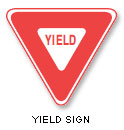
Another example of a regulatory sign is a "Yield" sign. This sign tells you that the road you are on joins with another road ahead. You must yield to the traffic ahead. Slow down or stop if necessary so you can yield the right-of-way to vehicles already traveling on the other road.
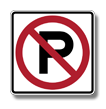
Most parking signs are also regulatory signs.
2. Warning Signs
Warning signs alert you to important conditions on the road ahead. These may be road hazards, changes in direction or some other situation you need to know about. Many of the yellow diamond-shaped signs are warning signs that you should slow down, especially on wet roads. Warning signs are there for your benefit, and they must be observed. To disregard one may be a traffic violation and could put you or others in a dangerous situation.
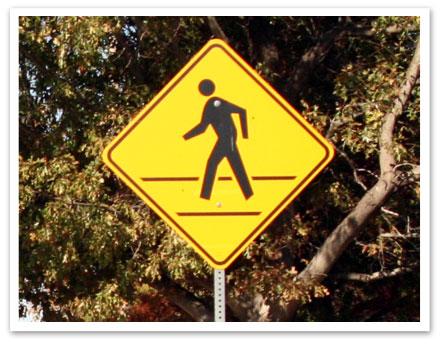
One example of a warning sign is a "Pedestrian Crossing" sign. This sign indicates that pedestrians may be crossing the road ahead. When you see this sign, you must slow down, look carefully for pedestrians crossing the road or about to cross the road, and yield the right-of-way to them.
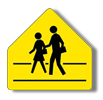
Similarly, the “school zone†sign is a warning sign as well. It's also equipped with a flashing yellow light, which will be on during times of activity at the school. When you see those lights flashing, slow down to the speed limit specified on the sign. Be extremely cautious in school zones. Children are unpredictable and may run or fall into the street. Even around high schools, students will often cross the street with little regard to oncoming traffic.
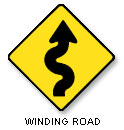
Warning signs can alert you to changing conditions ahead, such as winding roads, hills, bumps, or curves.
3. Guide Signs
Guide signs vary widely and usually provide some interest to your travels. They are especially helpful when you are traveling somewhere outside your home area. Guide signs often furnish travel information, route markers and other pieces of interesting information.

Some examples of guide signs include route marker signs, which tell you what road you are traveling on, freeway signs that show you which lanes to use to follow a particular highway route, and milepost signs, which provide a clear way of identifying the location of crashes, breakdowns, and other emergencies on the highway. These are posted every mile on Interstate highways, beginning at our state line. If you ever call 911 to report an emergency, look for milepost signs to provide the emergency responders with a clear location.
This month, we hope you spend a little bit of time each day reading with your family, whether it be picture books or road signs! If you’d like to learn more about traffic safety, visit our website! We offer fun and convenient online courses for defensive driving, insurance discounts, tee driver education, and more!